万字长文,Beau Hindman谈手游MMO的调研和用户反馈
我邀请独立开发者Dave Toulouse(游戏邦注:他是《Golemizer》和《Star Corsairs》的开发者)帮我完整体验从头至尾制作游戏的过程。这里我们将从基本构思和框架着手,然 后根据讨论内容和读者评论组合出一款基本的手机MMO游戏。
我很高兴我们将目光锁定于手机MMO。我知道Dave能够阐述任何题材的游戏制作,但基于浏览器的游戏似乎是获得成功的捷径。若游戏能够适应浏览器,那它就能够搭载许多设备, 包括智能手机,我们能够跳过整个应用制作过程、审核问题、时间限制及更新工作。简单性是整个项目的关键点。
那么我们的游戏将是什么样子?玩家将进行什么操作?虽然我们已顺利完成若干简单目标和机制,但要记住首个版本的游戏非常简单而直接。我们希望设计和游戏内容能够更多展 示设计理念,而非最新画面或机制。浏览器具有简单性特点,所以我们也需要保持设计的简单性。我从《Die2Nite》、《Illyriad》、《Glitch》,甚至是若干社交游戏中获得灵 感。
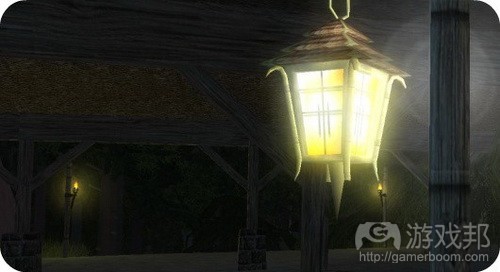
fullscreen capture 1 from massively.joystiq.com
我起初先构想自己期望的游戏操作内容。经过深思熟虑后,我希望游戏每天能够只容纳若干玩家,能够只涉及若干操作。虽然我们很不喜欢社交游戏的能量运用机制,它通常会在 大约15分钟的体验后就要求玩家掏钱,但我发现能量其实是“精力”的代名词。在沙盒游戏领域中,精力是关键要素。《Wurm Online》及其他游戏允许玩家进行特定数量的操作,直到他们耗尽精力,需要进行休息。在很多社交游戏中,玩家的休息操作就是退出系统,进行等待,但玩家可以选择支付现金,从而跳过等待环节。一段时间后,社交游戏的能量 机制就会让人觉得像是骗人伎俩,这是非常巧妙的招数,但依然只是个小伎俩。

full screen capture from massively.joystiq.com
我还希望游戏能够减少玩家的操作内容,因为这款MMO游戏非常简单。我们已将操作数量缩至1天1次。
在确定玩家将如何同游戏空间互动后,下面我们将论述其中原因。我们一直都很喜欢求生主题的MMO游戏(游戏邦注:通过少量工具和希望将玩家置于危险境地的游戏)。我希望这 款小型MMO游戏的玩家能够努力争取某些物品,获得帮助其他玩家的物品。我觉得让玩家汇聚成小帮派,然后进行相互较量,以实现顺利存活是很棒的想法。那么要设立多少帮派? 为什么帮派数量如此重要?

fullscreen capture 2 from massively.joystiq.com
我们最终设定3个基本派别。为将游戏变得具有可玩性,我们最终决定让玩家享有变成松鼠、海龟还是乌鸦的选择。每个种类都有其利弊,这有点像剪刀石头布原理。例如,乌鸦很 快,但无法运载很多物品。海龟可以运载很多物品,但其速度很慢。松鼠则处于折中水平,在两方面的表现都还不错。此外,我们还给各种类引入不同的地形奖励。
玩家可以深入森林收集物品,以期从中获得尽可能多的物品,然后最终取得胜利。为什么是3个种类?想象下若是游戏只有2个种类。由于我们的游戏有时间限制,我们将融入“胜 利”情境。3个种类不仅防止游戏过于简短,避免仅停留在一方比另一方持续更久的模式上,而且还能创制造张感,使游戏出现间谍和背叛情况。这就是设置3个种类的优点所在。
截至现在我们已把握游戏的基本构思及运作方式。把握基本可行框架是件值得高兴的事。
我们现已握有暂时的作品,暂时的美工元素及可行的游戏构思。我们的想法是所有用户都会登陆注册,加入帮派,融入到游戏世界中收集商品,推进自己的角色走向胜利。玩家可 以随意注册,选择自己的角色。注意我们不会在项目之后保留你的邮件地址或相关信息。但在游戏过程中,我们可以运用你所输入的内容。
首先,游戏是否应该属于特定题材?你是否偏好科幻题材?你觉得现代背景如何?记住我们将会逐步更新美工内容,Dave会对内容做出相应调整。
接着,确定游戏要融入何种类型的持续性。持续性在MMO中非常关键,但其呈现方式多种多样。我们无需拥有包含持久美术元素的三维空间。我们是否希望运动场变成游戏的持续性 元素?我们是否应该允许玩家相互战斗,将他们所呈现的数值和影响变得具有持续性?若你开始考虑这方面,不妨想想持续性在不同游戏中的运作情况,你会发现这是个非常复杂 的问题。
最后,你应该思考这些基本设计构思如何在你最喜爱的作品中呈现。仅通过邮件沟通,我就发现讨论开发工作是件非常有趣的事情。我还发现自己颇钟情于某些题材、风格及机制 。我喜欢硬核机制,但我不是复杂游戏的粉丝。游戏内容可以简单而富有趣味。
下面是读者对我们两项问卷调查的回复。
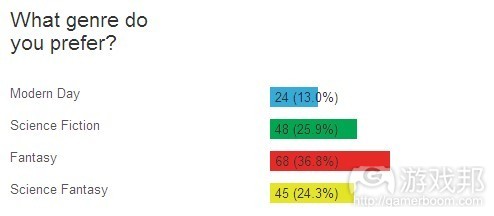
genre(from massively)
你偏好什么题材?
* 现代题材(Modern Day)——24(13.0%)
* 科幻题材(Science Fiction)——48(25.9%)
* 梦幻题材(Fantasy)——68(36.8%)
* 科学奇幻(Science Fantasy)——45(24.3%)
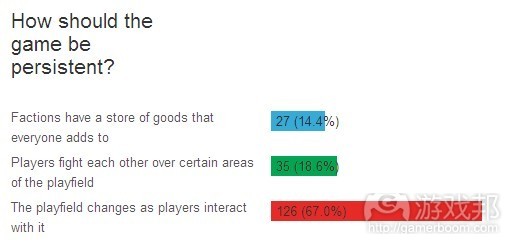
persistent(from massively)
游戏应如何保持持久性?
* 帮派拥有供各玩家添加的众多商品——27(14.4%)
* 玩家在运动场的某些领域里互相较量——35(18.6%)
* 运动场随玩家的互动而发生改变——126(67.0%)
为确保能够在2月份内完成项目,我们坚持设计的简单性原则。我们的想法不是创造最佳水平的电子游戏,而是制作能够呈现若干MMO设计基本要素的可行架构。
虽然我上篇有关此话题的文章反响一般,但我从中学到有关设计的重要一课:玩家通常喜欢谈论缺乏可能性的内容,而不是具有可能性的元素。Dave告诉我,他的玩家经常向他传 递他们希望游戏包含什么内容,丝毫不会考虑制作游戏的难度。
但评论栏里依然有很多很棒的构思。下面我将基于这些构思谈论本周的更新内容。
下面就先来看看读者DevilSei的评论:“游戏场地若能够就玩家的动作做出回应将非常有趣;这将带来起伏情况,因为玩家需要调节自己的前进方向,原因在于某些区域可能会没 有可利用资源。”他口中的游戏场地能够随玩家的移动和操作而发生改变。我们一直都很欣赏MMO游戏空间会逐步发生改变的构思。在多数MMO游戏中(游戏邦注:尤其是搭载手机 平台的内容),玩家在游戏中的居住和体验空间就只是个舞台而已。舞台包含些许小道具,有时灯光还会发生改变,但通常玩家是空间中唯一会发生变化的元素。虽然游戏融入动 态NPC或活动事件,但这样会让游戏场地的显得呆滞缺乏变化,其内容完全处在预料之中。
若我们允许自己的手机游戏逐步发生改变,即便只是基于相当简单的模式,我们就能够让玩家持续猜测未来的发展情况。也许越多玩家拜访后,我们的地图区域就会受到更多影响 ?比如,在被第10个玩家拜访后,区域也许就会发生改变,甚至是从一个提供商品的常规区域变成一个能够提供更多商品但很危险的区域?随着越来越多玩家拜访区域,其价格就 会变得越来越高。Dave同意这点,但现在我们需要寻找方式告知玩家,哪个区域承载更多商品,或存在更大访问风险。我觉得区域的图像设计能够起到一定的帮助作用。
DevilSei的其他评论内容是:“也许可以采用平衡模式,游戏基于玩家的贡献情况提高或降低他们的关卡级别。若玩家持续丧失积分,所处关卡就会降低,你能够利用的积分数量 就会减少。但随着你在团队中贡献更多,获得更多积分,你的关卡级别就会提高,你就能够投入更多积分进行填充。”这是个有趣的构思,但我需要DevilSei做出更详细的陈述。 他的意思似乎是,随着玩家在游戏中的表现变得更好或更糟,最终结果将呈指数模式发展。我觉得,若玩家发现自己是在进行重复操作,这最终将变成一个严重的问题,但做出相 应调整后,这就能够顺利进行运作。
也许让玩家的统计数据根据他们在游戏中的表现而或升或降会给游戏带来不良影响?若游戏体验空间会随游戏的进展而发生改变,玩家的统计数据会根据他们的表现而出现起伏, 这将会是款非常有趣的游戏。但很多玩家都不喜欢无法预测的游戏。他们希望自己能够把握统计数据,知晓要如何调整操作,方能让数值呈现最佳状态。他们希望看到表格和图表 信息,这样他们就不会对所呈现的内容感到惊讶。虽然这类玩法令我望而生畏,但我清楚完善的必要性及为什么有些玩家觉得这些内容颇有趣味。
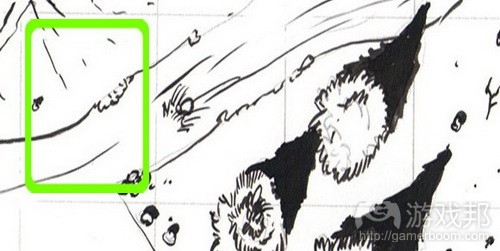
full screen capture from joystiq.com
DevilSei继续表示,“我还建议开发者给角色种类设定限定条件。现在乌鸦无疑是最高得分者,似乎只有一位玩家选择乌龟,松鼠的情况也只是稍好一点。在竞争游戏中,确保竞 争场所的公平性非常重要。游戏中有3个玩家种类,因此更需重视这一点。”
虽然乌鸦数量是由漏洞造成,但他提出的是个很不错的观点。你要如何维持游戏的“公平性”和平衡性?我们要如何确保所有类别都处于平等地位或接近平等地位?我向Dave提议 限定玩家的种类选择,进而维持游戏的平衡性,但我觉得玩家随后就会抱怨此限制性。也许我们可以通过提供某些甜头或法术鼓励玩家加入不那么热门的种类?但这又会被其余玩 家认为是不公平条件。我们还得考虑提高各玩家的操作限制。初步设置是出于测试目的;既然我们已经把握其运作方式,下面我们就能够稍微谈及此内容。
上周谈到的在浏览器窗口中托管游戏似乎令有些读者感到颇为费解。浏览器是最佳选择的原因是,如今多数智能手机的浏览器运作方式都同标准模式相当。如今很多PC浏览器都缩 小自己的尺寸,旨在配合手机的4英尺屏幕。关于操作能力方面,我们能够基于一个浏览器窗口覆盖若干子窗口。手机玩家可以在自己的智能手机上体验游戏,桌面用户可以通过浏 览器在游戏中游荡,游戏的基本图像和代码设置令iOS玩家能够接触这些内容。浏览器是个非常完美的平台。
下面我将呈现包含更多操作内容及融入稳固故事内容的作品。相比能否制作出复杂作品,呈现“真正”的MMO元素,我更关心的是自己所设计的作品是否能够传授些许设计经验。
现在游戏已具有富有幻想空间的背景设置,体验空间会随玩家的操作而逐步发生变化,我们就下列问题调查读者的看法:
1. 游戏背后的启发是什么?游戏包含什么角色种类,为什么会存在这些内容?
2. 我们得给游戏命名,我们希望名称涉及生存,或基于角色类别的生存内容,或是富有奇幻色彩。
关于上述问题,我们收到许多反馈信息,但我无法一一陈述,只能挑选其中几条我觉得颇有价值的观点。遗憾的是,现实情况使得游戏的开发过程不得不向后推迟。我的合作伙伴 Dave Toulouse此时手头有2款作品需要处理(游戏邦注:就是前面提到的《Star Corsairs 》和《Golemizer》),现在他还得回复我的邮件。虽然我们获得很多很棒的评论,但我 们依然不得不转投美工内容,着手游戏命名,在游戏内容中融入些许启发性元素。

fullscreen capture 4 from joystiq.com
下面我将详细分析游戏开发的进展情况。需注意的是,Dave和我打算持续试验游戏内容。我喜欢更新游戏及持续进行讨论,因为其中包含许多有趣内容。
关于新制作的图像,我只是绘制出若干外观优美的角色种类,给予它们特定名称,确定描述它们能力的适合方式。但我需要在游戏中保留松鼠元素,所以很确定要引入Squirreliens角色。此项目的有趣之处在于我们首先融入各种构思,然后查看其运作情况。现有地图同原先的地图几乎完全相同,只是我有进行一定的设计调整,这样“树林”就 会出现在一定数量的区域中,“水域”会呈现于其他区域中,再来就是“沙漠”和“平原”。随后我们就添加编辑器,以配合地图的各个区域;而各种类也能够对这些区域做出回
应。
MMO游戏的环境元素鲜少被玩家派上用场。它们只是角色存在的背景布幕或舞台而已。我赞同这样的看法:在标准MMO游戏中,便携设备的平面地图给玩法带来的影响比三维空间多 。Deliverator提出GPS或真实定位互动想法,这是《平行王国》和《Fleck》等MMO游戏所包含的元素。围绕Deliverator评论内容的谈论非常有趣。区域法则甚至能够影响基于现实 定位元素的游戏。居民区能够给增加经验值,或者工业区将与道具锻造系统产生联系。
DanVanBeek提出一个非常有趣的观点:“一个有趣的设计理念是,设立会有重要事情发生(Something Important Happened)的初期森林区域。若游戏每周重新进行设定,那从根 本来说就像是土拨鼠日(玩家每天都会进行相同的操作),虽然它将体验活动局限于动物世界中。来自未来世界的人类试图影响已发生的事情(Thing That Happened)。游戏出现 越来越多的穿越某区域的时空旅者,致使原本的‘时空理论’被打破。”
我们能够就游戏的设置做出调整,尤其是基于配合巧妙构思的目的。从根本角度来看,玩家是尝试改变重大事件的时空旅者。他们对时间的干预会给游戏带来消极影响,导致出现 随机事件或者甚至是随机天气模式。游戏能够处理这些随机道具,它们会带来众多的不同影响。时空旅行情境之类的元素也是原创构思,会给作品增添许多趣味。仔细研究几款我 们最爱的作品就会发现,它们通常基于相似的设计理念,但会融入不同风味和纹理,以将自己同其他作品区别开来。
我们想要添加的下个元素是实际运动。现在我们已能够选择任一区域开始游戏,而且能够在次日拜访其他区域,无论其是否处于地图中。起初我们只需说明玩家要如何在地图上进 行移动,但现在我们需要将整个过程变得更逼真。不同角色种类多半会从不同区域着手,各玩家根据具体种类,将呈现不同的运动距离。若玩家选择Squirrelien角色,它就能够每 天移动两个方格。两个方格必须处于相邻位置,在前进过程中,玩家会遇到随机事件、其他玩家及各种奖励。我现在越发喜欢此完全基于探索及信息共享的MMO理念。若你希望自己 的角色类别获得胜利,你就需要在空间中进行探索,尝试发现新区域及有用道具,更快地和团队分享信息。
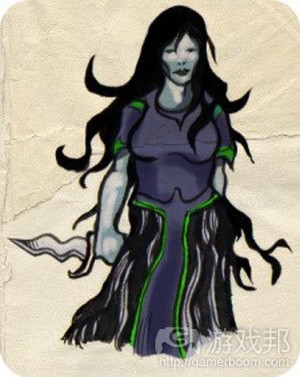
sketch 2 from joystiq.com
这并不是说游戏丝毫没有战斗内容。游戏会融入战斗元素,但这不是核心内容。也许通过外交选择方案处理战斗问题会更富趣味?若你在同个方格中遇到敌人,你将能够选择是同 其战斗,还是共同协商问题。奖励适用所有角色种类,辩论“赢家”有权决定是进行战斗,还是避开当前情境。
我们还需要呈现各区域的人口布局情况。Dave觉得游戏有必要呈现各角色种类在各个方格的分布情况,这样玩家才能够基于这些数据做出相应决策。也许玩家可以通过拜访充满同 类角色的方格获得魔法?这个机制非常简单,但能够给玩法带来广泛影响。
我描述这款手机游戏设计的一个方式就是将其称作MMOBG(大型多人在线棋盘游戏)。目前业内已有多款在线棋盘游戏型的作品,此术语不仅描述游戏的体验方式,还呈现玩家或将 看到的内容。游戏的稳固棋盘以地图形式呈现,玩家角色以虚拟符号呈现,玩法基于回合模式。是的,只要符合若干基本标准,游戏就算是属于MMO类型。出于文章撰写需要,我们 保持较小规模的玩家数量,但这些数据可以扩大至较大规模。服务器上的用户数据可能不是30-100人,而是1000人,他们遍布地图各个角落,进行资源收集、参加战斗以及探索新 道具和新区域。
相关拓展阅读:篇目1,篇目2(本文由游戏邦编译,转载请注明来源,或咨询微信zhengjintiao)
MMObility: Let’s make a mobile game, part one
by Beau Hindman
I thoroughly enjoy reading your comments, especially when the discussion turns to game design or suggestions for development. I decided it was high time that I sat down and experienced, even if just a little, how the design process goes. I’ve had plenty of peeks at different studios, but I wanted to know what it is like to actually make a game from basically beginning to end.
So for the next four weeks, I will be doing something special. I invited indie developer Dave Toulouse, maker of Golemizer and Star Corsairs, to help me in this journey. If you’d like to find out more about Dave, you can visit his official website, follow him on Twitter, or even read an interview I did with him a while ago. He really is the epitome of the indie spirit, and I am so thankful that he volunteered to do this with me.
The goal is to start with a basic idea and framework, and using input from our discussions and from reader comments, assemble a very basic working mobile MMO. So let’s get started!
I am really glad Dave and I decided to go with a mobile MMO. I knew I could get him to make me almost anything, but a browser-based game seemed to be the shortest route to success. If we made the game fit within a browser, it could be played across pretty much any device, including a smartphone, and we would skip the entire app-making process and issues with approval, time constraints and updating. Simplicity is the key word with this project.
So what would our game be? What would players be expected to do? While we have arrived at some pretty simple goals and mechanics, bear in mind that this first version of the game is very simple and direct. We want our design and game to work more to show off design concepts instead of the latest graphics or mechanics. The browser keeps it simple, so we had to keep the design simple as well. I am drawing inspiration from games like Die2Nite, Illyriad, Glitch and even a few social games.
“While I am hardly in love with the common social game mechanic of energy usage that begs players for money after maybe 15 minutes of gameplay, I nevertheless realize that energy is just another term for stamina.”
I started by imagining what I would want the game to do. After much thought, I knew that I wanted it to be from the school of design that limits players to only a certain number and type of actions per day. While I am hardly in love with the common social game mechanic of energy usage that begs players for money after maybe 15 minutes of gameplay, I nevertheless realize that “energy” is just another term for “stamina.” Inside the world of sandbox gaming, stamina
is a key component. Wurm Online and others allow players to perform only a certain number of actions until they run out of stamina and need to rest. In many social games, you will also “rest” by logging out or waiting, but there is a cash option that cuts the wait down significantly. After a while, a social game energy mechanic can feel like a real gimmick. A brilliant gimmick, but still a gimmick.
I also wanted to limit the player’s actions since this MMO will be very basic. We have limited the number of actions to one per day. We can adjust the number after you, fair guinea pigs (I mean readers) tell us what you think. So the mechanic that represents fatigue is basically set.
After we settled on how the players will interact with the world, we wanted to decide why. I have always loved survival MMOs, games that shove a player into a dangerous world with nothing but a few tools and a bit of hope. I wanted the players of this tiny MMO to have to go out and get something, something that might help other players. We thought that having players gather in factions or groups and then compete against other factions for survival would be cool. So
how many factions? Why would the number be important?
We came up with three basic factions or groups that players would join. For the sake of bringing the game to a playable point, I decided that players could be either a squirrel, a turtle or a crow. Each race or faction would have strengths and weakness, sort of like a system of rock-paper-scissors. The crow, for example, is fast but cannot carry a lot. The turtle can carry a lot but cannot move that fast. A squirrel is the middle man and can do it all decently well. We could also include different terrain bonuses for each race or faction.
Players would go into the woods to gather goods in the hopes of gathering the most, thus winning the game. Why three factions? Well, imagine if there were only two. Since our game is going to be time-limited, we will have a “win” scenario. Three factions not only prevents a short game by allowing one side to simply outlast the other but creates tension and the possibility for spying and betrayal. You know, the good stuff.
“Indie training is sort of like Jedi training, but it occurs only while sitting in a chair.”
So far we have a basic idea about what the game is and how it will work. It was good to arrive at the point at which we had a basic, working framework. Of course, I am simplifying our email conversations as well as making it sound like he was able to create what I wanted with a flick of the wrist. The truth is that he was able to work with me pretty easily as a result of his years of indie training. Indie training is sort of like Jedi training, but it occurs only while sitting in a chair. Seriously, he works hard, and it was nice to ask for something and have it delivered. So what did he deliver so far?
If you go to this official link, you will see the basic game. We have a temporary title, temporary art and working concept. The idea is that each player will sign up, join a faction, and go out into the world to gather goods to propel his side to victory. Feel free to register and choose your side. Note that we will not retain your email address or information after the project for any reason. Along the way, however, we could use your input.
First, should the game belong to a certain genre? Do you prefer science fiction or fantasy? How do you feel about a modern-day setting? Remember that I will make updated artwork as we go along, and Dave will adjust the guts accordingly.
Next, decide what sort of persistence there should be. Persistence is key to an MMO, but it can come in different forms. We don’t have to have a three dimensional world with state of the art graphics to be persistent. Do we want the playfield (the woods, the space station) to be the persistent character in the game? Should we allow players to combat each other instead, making their stats and the effects on the environment to be the real persistence? When you start to think about it and imagine how persistence works in different titles, you can see just how complex an issue it can be.
Last, you should think about how these basic design concepts appear in your favorite titles. In even just our email conversations, I have discovered just how much fun it is to discuss development. I’ve also realized how I enjoy certain genres and styles, as well as which sort of mechanics I adore. I love hardcore mechanics but am not a fan of overly complex gaming. It can be simple and a lot of fun.
Before you go, take a moment and answer the two polls I have attached at the end of this article. Feel free to leave a comment with your suggestions. Remember that this is just for fun; nobody will make any money from the game. The goal here is to have some great discussion about design, to make a working MMO (even if it is a simple one), and to dig a bit deeper into the world of game development.
What genre do you prefer?
* Modern Day 24 (13.0%)
* Science Fiction 48 (25.9%)
* Fantasy 68 (36.8%)
* Science Fantasy 45 (24.3%)
How should the game be persistent?
* Factions have a store of goods that everyone adds to 27 (14.4%)
* Players fight each other over certain areas of the playfield 35 (18.6%)
* The playfield changes as players interact with it 126 (67.0%)
Last week I started working with Dave Toulouse, indie developer of Golemizer and Star Corsairs, to build our very own mobile MMO. For the sake of completing the project within the month of February, we kept our game designs simple and easy for anyone to play. The idea was not to create a state-of-the-art video game but instead to build a working framework that illustrated some of the basics of MMO design.
Ironically, my first column on the subject was received rather coolly when I consider my normal column response, but last week’s responses taught me a valuable lesson about design: Players often want to talk about what is not possible rather than what is. Dave told me how his players often told him what they wished his games would achieve, without ever considering just how difficult it is to make a game.
Still, there were several great ideas in the comments section. I’m going to use those ideas to break down this week’s update.
Let’s look first at reader DevilSei’s comments: “It would be interesting to have the field respond to player actions; it would lend an ebb and flow to it as players have to adjust how they go about as areas possibly lose available resources.” He brings up a playfield that would actually change as players moved over it and played in it. I’ve always enjoyed the idea of having the actual play area of an MMO change over time. In most MMOs, especially mobile ones, the world that players live and play in is pretty much a stage and nothing more. There are props on the stage, and occasionally the lighting changes, but generally the players are the only things that are altered. Even with dynamic NPCs or events, the playfield becomes predictable and stagnant.If we allow our mobile game to morph over time, even in a very simple way, we keep players guessing what will happen next. Perhaps each of our map squares could be affected the more players visit it? Let’s say that a square might change after being visited by its 10th player, even changing from a normal square
that provides goods to a square that provides even more goods but is very dangerous to visit? As more and more players visit the square, the price becomes much harder to pay. Dave agrees, but now we need a way to indicate to the player which squares carry more goods or are riskier to visit. I think that the artwork of the square might be able to help.
More from DevilSei: “Perhaps a form of leveling that allows people to gain and lose their levels as their contributions fluctuate. If you consistently lose points for your side, your level lowers and the number of points you can use is decreased. As you prove effective for your team and gain points, though, your level increases, which allows you to invest more points from the score to replenish or whatever else items may be able to do.” This is an interesting
concept, but I would need DevilSei to clarify a bit for me. He seems to be saying that as a player becomes better or worse at playing the game, the effect is exponential. I could see this becoming a very serious problem if players find themselves in a rut (similar to losing experience upon death), but it could be tapered and tweaked to work out.
Maybe having a player’s stats go up or down based on how successful he is during the game is a good way to throw a wrench into the works? If you have an environment that changes while the game goes on and a player’s stats change based on how effective he is in that environment, you might have a pretty exciting game. A lot of players do not want anything to do with an unpredictable game, though. They want to know their stats and how to tweak those stats to
perfection. They want tables and graphs so that nothing is a surprise. While gameplay like that sort of makes me cringe, I can understand the need for perfection and why some players find it exciting. If this small game I am making represents anything, however, I would hope that it represents how I would make a game if truly given the chance. If I had that chance, the game would not be predictable.
“I would also suggest maybe capping the faction availability somewhat,” continued DevilSei “Right now, crows are far and away the highest scorers, with turtles seemingly only having one person playing for them, and squirrels are not far above that. In a competitive game, its always important to ensure as fair a field as possible. This is amplified when you have three factions.”
He brings up a good, solid point, although the crow numbers were the result of a bug. How do you maintain “fairness” or balance in a game? How do we make sure that all sides are equal or as close to equal as we can get them? I’ve asked Dave about a mechanic that forces players into sides to maintain balance, but then I could understand when players complained about being forced. Perhaps we could encourage players to join the less-popular factions by offering free
goodies or buffs? Once again this can be seen as unfair by the rest of the playerbase. We also have to consider raising the limit of actions for each player. The initial setting was meant as a test; now that we see how it can work, we might be able to bring it up a bit.
Last week it seemed as though hosting the game inside a browser window confused some readers. The reason a browser is perfect is because most smartphones now have a browser that acts pretty much like a standard one. Truly it is as though the PC browser has been shrunk down to fit in a four-inch screen. Given that ability, we cover several bases with one browser window. The mobile players can play on their smartphones, the desktop players can poke around in the game through their browsers, and the basic images and coding of the game open it up to iOS players. The browser is a perfect platform.
So, we have reached the end of the column for this week. I have a few things to brush up, including new art, and Dave will need to tweak some tables and work that indie dev magic to add in any new adjustments. We’ll be updating this weekend, and by next week we will hopefully have a game with more things to “do ” and a more solid story behind it. I am not as worried about having a complex game that plays like a “real” MMO as about having a game that has taught us all a bit about design.
So, I once again need your help, fair readers. Now that the game is going to boast a fantasy setting and the playfield will change as players move through it, we need to answer a few more basic questions.
First, what is the lore behind the game? What are the races involved, and why are they there?
Next, we need to come up with a name for the game. I would like something that has to do with survival, faction-based survival, or fantasy.
I will watch the comments during the week, and by the next installment, we should have a game that is starting to resemble an actual MMO, complete with title, lore, and gameplay. Remember, the more comments and discussion we have, the better. Don’t worry — this is all an exercise, so fire away… no matter how silly the idea! Be sure to follow me on Twitter, I’ll be updating players on this week’s progress as it comes out! Keep an eye on the official game page here.
Last week we continued our discussion about how to make a mobile game, and the Massively readers offered up some great input. I wish I had the space to write up every single comment, but instead I will pick some of my favorites and we can discuss it from there. Unfortunately, real life has pushed development on the game back just a bit. Dave Toulouse, my indie developer partner-in-crime in this series, not only has two games of his own to run, Star Corsairs and
Golemizer, but is now dealing with my silly emails. So while last week’s column got some great ideas in the comments section, we were really only able to switch out the artwork, name the game, and add a tad bit of lore.
Fear not, fair readers! I will break down the development that is still planned on being pushed into the game over the last week, and it’s important to note that Dave and I plan on coming back to the experiment over time. I’d like to update the game and continue discussion since it has been so interesting so far! In the meanwhile, click here to go to the official game page!
If we look at the new artwork I made up, I really just sketched out some neat-looking races, named them, and came up with a slightly fancier way to describe their abilities. I had to keep a squirrel in the game, though, so The Squirreliens were a no-brainer. The fun part about this project is just throwing ideas down, any ideas, and seeing how they stick. I drew the map to essentially lay over the old one, but I designed it so that “woods” would fill a certain number of squares and “water” would fill others, along with “desert” and “flatlands.” Later on we can add modifiers to correspond with the different areas of the map; the different races could react to those areas as well.
The environments in MMOs are not often utilized. They are simply backdrops or stages for our characters to exist in, nothing more. I like the idea of a flat map shining from a portable device having more impact on gameplay than a three-dimensional world in a standard MMO. Reader Deliverator brought up GPS or real-life location interaction, something that is done in MMOs like Parallel Kingdom and Fleck. The discussion following Deliverator’s comment is fascinating. Zoning laws could even affect a game based on real-life locations. Residential areas could give bonuses to experience, or industrial areas could help with crafting!
DanVanBeek had a really interesting idea: “An interesting lore angle is to have an early foresty area where Something Important Happened. If it’s reset weekly, its basically Groundhog Day, though it discounts playing as animals. People arrive from the future to try to influence the Thing That Happened. More time-travelers passing through an area destabilize the ‘spacetime whatever,’ increasing the danger from cosmic rips, etc.”
The setting of the game can always be changed, especially to accommodate such a neat idea! Basically, players would be time-travelers who attempted to change a grand event. Their meddling in time would have adverse effects on the game itself, causing random happenings or even weather patterns. These random items could be dealt by the game and could have any number of different effects. Something like a time-travel scenario is also an original idea that adds a lot of
flavor to the title. If we break down many of our favorite games, we’ll see that they often share very similar designs but have different flavors and textures that set them apart from each other. Unique flavor is paramount.
What we want to add next is actual movement. As it is right now, we can pick any zone to start in, and the next day can visit any other zone, regardless of where it is on the map. Initially this was done just to illustrate moving across a map, but now we need to make it more realistic. The different races will probably start out in a certain area, and each player will have a movement allowance depending on his race. If someone is playing a Squirrelien, for example, he can move two squares per day. The squares have to be connected, and along the way the player might come across random events, other players, or different bonuses. The more I think about it, the more I enjoy the idea of an MMO based almost entirely on exploration and the sharing of information. If you want your race to succeed, you must get out in the world, survive to discover new areas and useful items, and share that information with your team faster than the other races can.
This is not to say that there would be no combat in the game. There would, but it would not be the main focus. Perhaps settling battles through diplomatic choices would be fun? If you come across an enemy in the same square, you might be presented with the choice to fight him or to discuss the issue. Bonuses could be applied for each race, and the “winner” of the argument could decide to battle or to leave the situation.
We also need a way to show how populated each square is. Dave thought to show the population of each race in individual squares so that players could make decisions based on those numbers. Perhaps a player could receive a buff if she visits a square that is filled with others of her kind? It’s a simple mechanic that could have wide-ranging effects on gameplay.
One way I am describing the design of this mobile game is to call it a MMOBG: a massively multiplayer online board game. There are a few examples of online board games out there already, and I like how the term describes not only how the game might play but what players might expect to see. There is a persistent board in the form of the map, players are represented by virtual tokens, and gameplay is generally turn-based. Yes, it would qualify as an MMO as long as it
met some basic criteria. For the sake of this article series, we are keeping the numbers quite small, but it’s easy to see how those numbers could be scaled up to a truly massive size. Instead of 30 or 100 players, there could be 1,000 on the server, all of them wandering over the map while gathering materials, participating in combat, and discovering new items and areas.
I decided to call the game “Worgolt” because it sounded cool. I tried out a few terms and luckily searched them on Google before finalizing. I went through several made-up words, including one that turned out to be Yiddish slang for “prostitute.” Oops!
By next week we hope to have a game that is timed for a week of play and finally has a set of rules that represent MMO design. This has been an interesting experiment with some wonderful results. As we have seen, patches and development schedules can be pushed around even in the world of tiny browser-game development. I cannot say thank you enough to Dave for making time for this series.







































 闽公网安备35020302001549号
闽公网安备35020302001549号